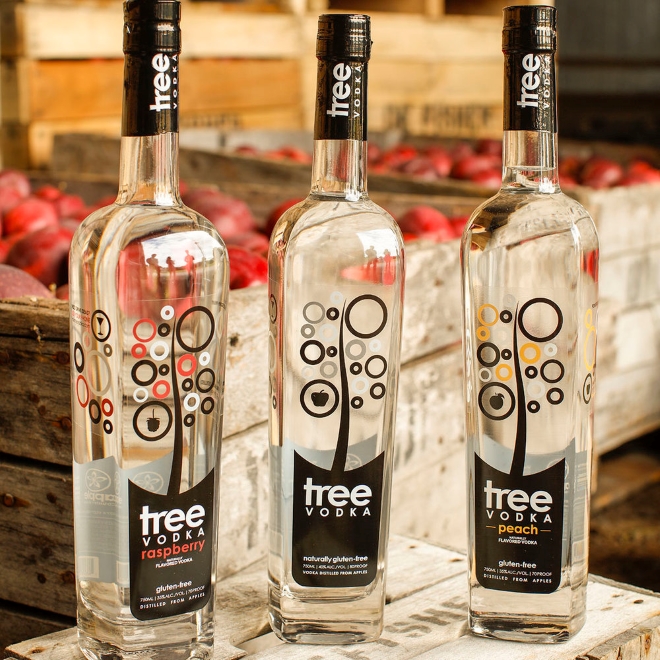Vodka: Crystal Clear Smoothness
Known for its crystal-clear appearance and neutral flavour, vodka is perhaps the purest example of a distilled spirit.

“Tastes like alcohol” is a common expression used to describe the taste of vodka, arguably the most neutral spirit currently imbibed by man. In a world where spirits all have their own bold, distinctive flavour profiles, vodka is an interesting beverage in that it stands out by being largely neutral, with the subtlest of flavours which may be hard to pick up by those unaccustomed to its initial alcoholic onslaught. Here we briefly cover the intricacies of the crystal-clear spirit known as vodka.
Origin Story
One of the longest-lasting debates on Earth is that of vodka’s origins. For centuries, Russia and Poland have been arguing over who first distilled the spirit. Both countries have a long history with the drink going back centuries, and have their established rich traditions involving the spirit. Will we ever find out where it came from? Probably not. Does it matter? Honestly, if both countries keep producing quality booze, I hardly think that anyone would care about a centuries-old debate. Whether you prefer the Russian or Polish product is completely down to personal preference.

How it’s Made
Traditionally, vodka was made distilled using alcohol made from potatoes or grains, such as wheat or rye. However, unlike other spirits, there are actually no restrictions surrounding what ingredients can be used to make this alcoholic beverage. On top of that, there aren’t any laws which define where it can be made. In comparison, Scotch whisky must be made in Scotland from malted barley and tequila must be made in Mexico from agave, but vodka can legally be made in any country, using any ingredient as its base. This has led more adventurous distillers to experiment with more unconventional ingredients such as milk or unsold pastries.
Vodka’s creation starts with the fermentation of whatever ingredient is chosen to provide the source of sugar. Yeast is added and the mixture is heated to convert the sugars into alcohol. The mixture is then filtered to remove any solids before being distilled in column stills. This distillation process is one of the most important parts in vodka production, as most distilleries believe this helps create a higher quality product. Most will distil their product at least three times, resulting in the spirit’s high alcohol content and neutral taste. Some will go a step further and further filter their vodka to remove more unwanted elements.

Following all that, the vodka is ready to be bottled and shipped to consumers.
Does it Really Taste of Nothing?
Like we write in our introduction, vodkas are typically said to taste like pure alcohol. This would be exceptionally true of ice-cold vodkas as much of the natural aromas and flavours are hidden by the lower temperatures. However, given that barrel aging and other factors aren’t introduced during production, purists will argue that behind the neutral façade, vodkas will possess the flavours of its base ingredients. Perhaps a little more subtle compared to other spirits but they are there nonetheless.
To help illustrate this point, here are a list of vodkas made by well known distilleries as well as small-batch craft producers who use a variety of ingredients.
Smirnoff No. 21

Starting off with perhaps the most well-known example, Smirnoff was founded in Russia in 1864 and is made with a traditional recipe that results in a smooth and easy-drinking concoction. Triple distilled and filtered 10 times, this is perhaps the most typical example of what we know of as vodka.
Grey Goose

France’s offering into the world of premium vodka, Grey Goose prides itself on distilling its product only once to create a quality vodka. The distillery attributes this to the high quality of the French ingredients used in production. The use of Picardie wheat and pure water from a natural limestone well, results in a clean vodka with toasty notes and hints of spice making Grey Goose a hit far beyond the Cognac region it comes from.
Black Cow Vodka

As its name suggests, the origins of this vodka are bovine in nature. This distillery is taking full advantage of the lack of restrictions around vodka production, choosing to use milk as its base ingredient. The milk definitely carries over in the flavour profile which starts of light and creamy before revealing hints of vanilla and even floral notes.
Tree Vodka

This New-York based vodka is made from apples grown right in the distillery. The apples are pressed on site and the juices are distilled to create this fresh vodka with unsurprisingly fruity notes that sets it apart from its traditional grain-based cousins.
Chopin Potato Vodka

A traditional family-owned brand, Chopin is flying the flag high for potato-based Polish vodkas. This classic spirit has a smooth mouthfeel, beloved by legions of vodka drinkers, and earthy notes courtesy of the humble spud from which it is distilled.
Crystal Head

Well-known for its distinctive skull-shaped bottle, Crystal Head also has a truly unique taste. Made from a special variety of corn called “peaches and cream”, glacial spring water, and filtered seven times through layers of quartz crystals known as Herkimer diamonds, this vodka is known for its subtle sweetness and notes of black pepper, lemon, and peaches.
Vodkas are often seen as the cheap alcohol imbibed in copious amounts by college students looking to get drunk, lacking the refinement of whisky and gin. For all the supposed lack of finesse, Vodka is the most popular spirit in the world according to international market intelligence provider, Euromonitor. Vodka’s appeal lies in its accessibility and transparent flavour which allows the unadultered, subtle, characters of its base ingredients to shine through. With so many options on the market, one only needs to explore the crystal clear world of vodka to find one that suits them.




